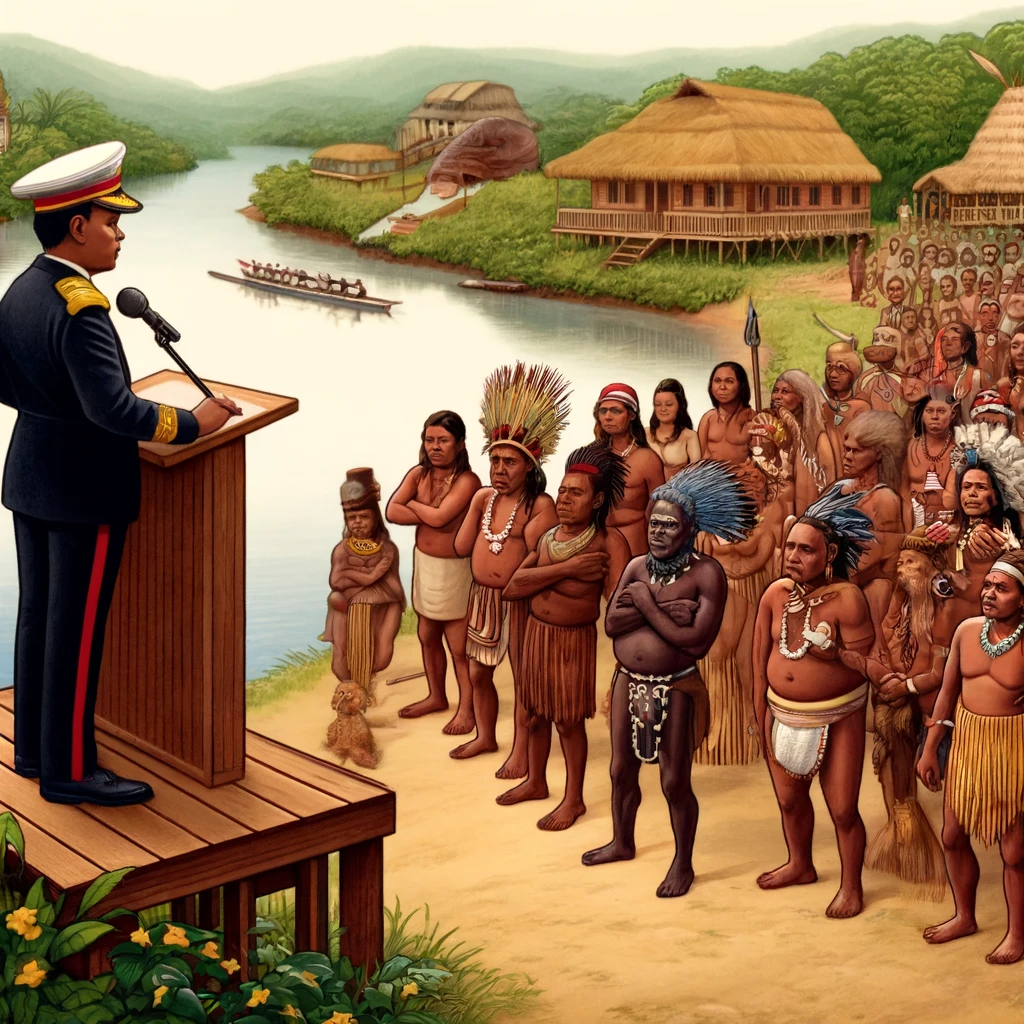Deputy Speaker of the National Assembly, Mr Lenox Shuman, listed some of the functions of the National Toshaos Council that are set out in the Amerindian Act 2006. He then writes, ‘the NTC, by the stroke of a pen and the endorsement by the entire NTC at the last conference, has endorsed one of the most progressive frameworks that gives them a meaningful way to monetize the standing forest thus endorsed the sustainable management of their Village lands’ (‘Endorsement of Low Carbon Development Strategy by toshaos council cleared path for forest monetization’, Stabroek News, 12 December 2022).
I respectfully draw to Mr Shuman’s notice that nowhere in Section 41 (a) to (j) of the Amerindian Act 2006 is the authorization given to the NTC to make decisions regarding Amerindian titled Village Lands. The ‘endorsement’ of a course of action is not equivalent to the legal transfer of any right(s) set out in an Amerindian land title to the NTC or to the Guyana Forestry Commission, (named as ‘Participant’, representing the government of Guyana in Aster Global’s Validation Report, 11 November 2022) or to any other entity.
Amerindian legal title to Village Lands is issued to all recognized members of an Amerindian Village. It is equivalent to the ‘transport’ or title deed to the house lot or rice land or farmland held by land owners in Guyana. There are legal procedures in the Laws of Guyana that guarantee (i) a land owner(s) rights to their land and (ii) the processes involved in transferring those rights to a third party.
Section 44 of the Amerindian Act stipulates the limits to the Village Council’s authority in regard to Amerindian land.
“(1) A Village Council shall not dispose or attempt to dispose of any interest,
right or title in Community lands except as provided in this Act.
(2) Any attempt to dispose of any right, title or interest in Community lands,
except as provided in this Act, is void.”
The Amerindian Act further sets out the authority of the collective members of an Amerindian Village in several sections, including Sections 15 and 34:
“Rules
15. A rule, and any amendment to a rule, made by a Village Council comes
into effect when –
(a) the Village Council has consulted the Community in general
meeting and two-thirds of the members of the Community general
meeting have given their approval; and
(b) the rule has been approved by the Minister and published in the
Gazette.”
“34. (1) Except as delegated to a Village Council under this Act, the collective
rights and powers of a Community are exercised by the Community.
(2) All decisions required to be made by a Community under this Act shall
be made in a Community general meeting.
(3) A Village Council shall call a Community general meeting every quarter
and if the Village Council fails to call a Community general meeting within four months
of the previous Community general meeting then not less than ten residents who are
eligible to vote at the Community general meeting may call the meeting instead.
(4) The notice period for a Community general meeting is at least fourteen days.”
Secondly, I draw Section 55(2) of the Amerindian Act to the Deputy Speaker’s attention:
“(2) The Guyana Forestry Commission may facilitate the consultations at the request of the Community but may not take part in the negotiations.”
I ask the Deputy Speaker to use his good office to clarify the legal authority of the Guyana Forestry Commission in the negotiations and contract between ART-TREES and the Government of Guyana.
Finally, the Deputy Speaker references the ‘Resolution of the National Toshaos’ Council Conference.’, relating to Guyana’s Low Carbon Development Strategy (LCDS) 2030. The Resolution was signed on 15 July 2022 by NTC Chairman, Derrick John and 13 other members of the Executive of the NTC. The final lines of that Resolution state the NTC’s position clearly:
“Communities are free to opt into this dedicated revenue mechanism for local communities.
– No deadline will be set for opting in.”
The NTC was freely providing advice and endorsement. The NTC did not go beyond its legal remit and arrogate to itself the right to speak on behalf of any/all of the ‘218 Amerindian and other hinterland villages’ mentioned in Aster Global’s Validation Report, 11 November 2022.
Editor, I submit that the Government of Guyana and its partner Winrock, have illegally arrogated to themselves the rights vested solely in Amerindian land title holders (equivalent to the transports held by coastlanders). In so doing, the sale of 33.47 million jurisdictional carbon credits to the Hess Corporation (USA) appears to be legally incorrect and the Board and shareholders of Hess could sue for misrepresentation in this sale.
Perhaps Deputy Speaker of the Assembly, Mr Shuman, can use his platform as leader of the Liberty and Justice Party, to provide representation to the affected rightsholders, the Amerindian owners of Village Lands, to retrieve these assets taken from them.
Yours truly
Janette Bulkan










